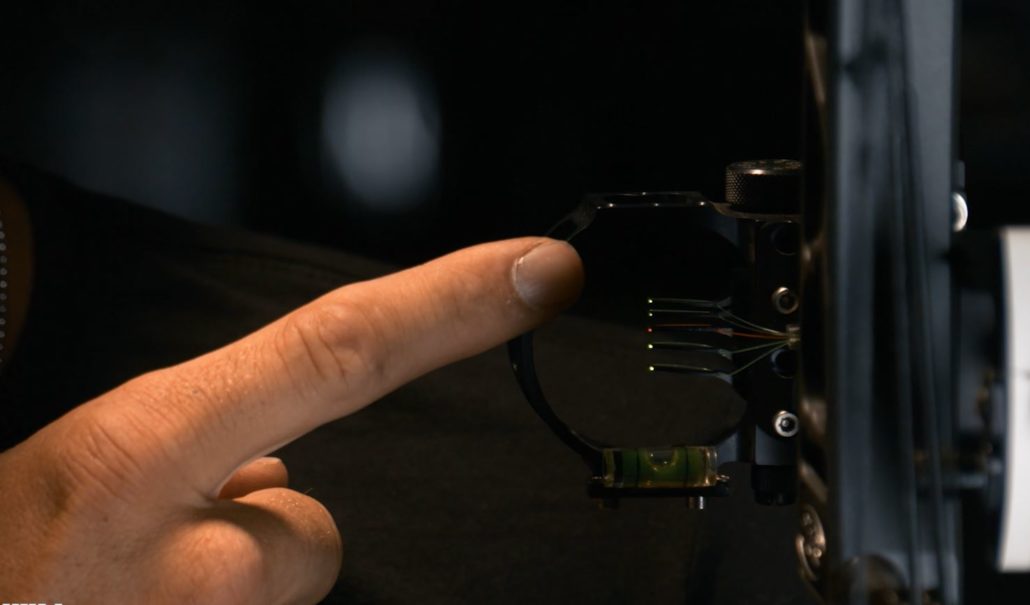“Archery Fit” Archery Tips | Single Versus Multi Pin Bow Sights
Single Versus Multi Pin Bow Sights
Today’s selection of bow sight options offers the bow hunter the ability to select just the right sight for their needs. When selecting a bow sight it is best to use a step by step process based on the intended purpose and end use. The first decision is for what purpose is the sight intended, hunting or target? As we are focused on hunting bow sights in this discussion the next consideration is, “What is being hunted and under what conditions?“
Single Pin vs. Multi Pin
Hunting sights are available in single moveable pin and fixed multiple pin models. Single pin sights are often preferred by hunters who find multiple pin sights confusing or with archers who are also dedicated target shooters and are simply more comfortable with a single pin sight. A single pin sight has the advantage of offering the shooter a single point of focus during the shot. The disadvantage is that the sight must be set for a specific distance before the shot and under hunting conditions that can and often does quickly change. Setting or changing the sight setting requires an extra step in the shot sequence. Once game is spotted the distance must be determined by mental calculation, pre-ranged-in markers or the use of a range finder, all of which require time and movement before taking the shot. When using a multiple pin sight for which the distances have been sighted in it is a simple matter of selecting the right sight pin for the distance and holding accordingly. Sounds simple but there are more considerations when choosing a multiple pin sight.
Eastern bow hunters targeting mainly whitetail deer will find the majority of their shots at ranges under 30 yards in wooded conditions. The average shot is normally under 25 yards with shots not uncommon at 15 to 20 yards. Western hunters find entirely different conditions when hunting deer and elk in open country where shots of up to 70 yards can present themselves.

Levi Shoots a Sure-Loc Lethal Weapon Sight.
When it comes to selecting a multiple pin sight consideration should be given to the number of pins required to meet the needs most efficiently. The final number of pins selected is determined by both the game being hunted and the equipment being used. The flatter the bow and arrow combination shoots the closer the pin gaps will be. Therefore a slower bow will use more pins to cover a specific distance range as opposed to a faster set-up that may use less pins. The object is to use all the pins that are required but the least number of pins to get the job done. Multiple pin sights are available with from two to seven pins so it is easy to find the right sight to fit any need. Pins can be removed or added if required for a truly custom set-up.
Pin Size
A major consideration when selecting a sight is pin size. Most manufacturers offer a variety of pin diameters with the most common sizes being .010, .019 and .029 inches in diameter. While most archers tend to select smaller pins, larger pins have a definite advantage that should be considered. First is eyesight of the shooter. Eyesight ends to reduce as people age and the changes are often so small it is hard to detect. However small sight pins can get blurry and may even tend to be hard to differentiate when set close together. Hunting shots often present themselves in early morning or late afternoon when the light quality can be poor. Struggling to see the sight pins can make the shot more difficult. Smaller pins cover less of the target and it is often thought that the smaller the sight pin the more accurate the sight. While this is true it must be considered under hunting conditions. A hunting sight is not intended for 10X accuracy and if the target is game as opposed to the X ring a larger sight pin may be the best overall choice. It is also common to outfit a bow sight with larger pin diameters for closer ranges and smaller pins for greater distances.
Mounting Bracket and Fiber Optic Options
Hunting sights also come with the option of different mounting brackets. While some sights mount directly to the bow with a short compact bracket others offer extended mounting bars which allow the shooter to adjust the sights distance from the bow. While both work well the extended sight bar has some advantages to consider. The greater the distance between the string peep and the sight pin the greater the accuracy. The major advantage of a movable sight bar however is one seldom considered. Most sights have a round pin guard designed to protect the sight pins from damage. While many shooters attempt to center each pin in the string peep a better method is to sight-in centering the outside diameter of the pin guard in the string peep. This allows the use of a larger peep sight which lets in more light making shots in low light conditions easier to make. Because the accuracy is still based on the centering of two objects, the inside of the string peep and outside of the sight pin guard the accuracy is actually increased. The movable sight bar makes this process easier as it allows the sight to be adjusted forward and back to make the round pin guard fit comfortably within the string peep regardless of size. This is a quick and easy way of obtaining excellent sight alignment with increased light gathering capabilities.
While all sight pins today are light gathering fiber optics the amount of light gathered varies with the amount of light gathering material exposed. For those seeking the ultimate brightness there are optional light systems that can be added to the sight. Some manufacturers even offer light adjustment features so the amount of light can be regulated, providing control over the sight pins brightness. This is a desirable feature as in low light an overly bright pin can actually make the pin fuzzy or appear to have a halo making accurate sighting difficult. In bright light the sights pins might tend to blend in or fade and additional power to the light is desirable. In either case having the ability to regulate the brightness of the sight pin is a definite advantage.



